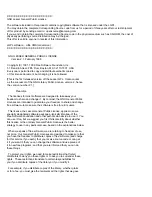
42
Profiler
User Manual
LCD flat screens
LCD monitors normally use a backlight with defined lighting characteris-
tics. Colors are generated by filtering this light source with liquid crystal
filters.
Simple LCD monitors work with internal signal processing with 8bit
accuracy (256 steps per primary color). Depending on the desired white
point (e.g. D50) the intensity of one or more channels must be reduced
considerably. This results in a loss of a considerable amount of steps in
the colors that have been reduced and thus in a loss of display quality.
The result is banding. Highlights and shadows can also be affected.
Hardware calibrateable LCD monitors work with signal processing of 10
or more bits per channel (e.g. 10 bits = 1024 steps).
If one channel should be reduced to 50% there will be enough remain-
ing data to describe the 256 steps of the color signal sent to the monitor.
This means that there is differentiation between all the colors, they do
not get clogged up.
This alone does not make a monitor hardware calibrateable. The monitor
needs to be able to communicate with the calibration software. Besides
the white point (color temperature) and luminance, some hardware
calibrateable monitors allow for controlling gradation curves so that no
correction needs to be done in 8 bits on the video card (e.g. the NEC
SpectraView series).
Summary of Contents for SpectraView
Page 1: ...User Manual When Colour is Critical ...
Page 5: ...Chapter 1 Preface ...
Page 7: ...Chapter 2 Installation and Licensing ...
Page 16: ...Chapter 3 Quick Start ...
Page 37: ...Chapter 4 Advanced ...
Page 67: ...Chapter 5 Product information SpectraView Profiler 4 ...
















































